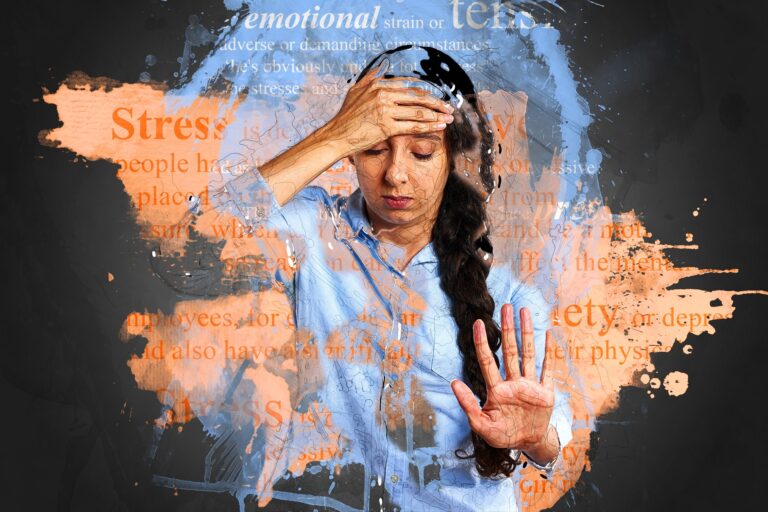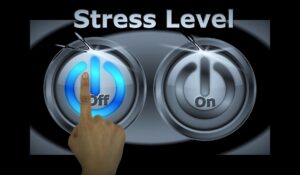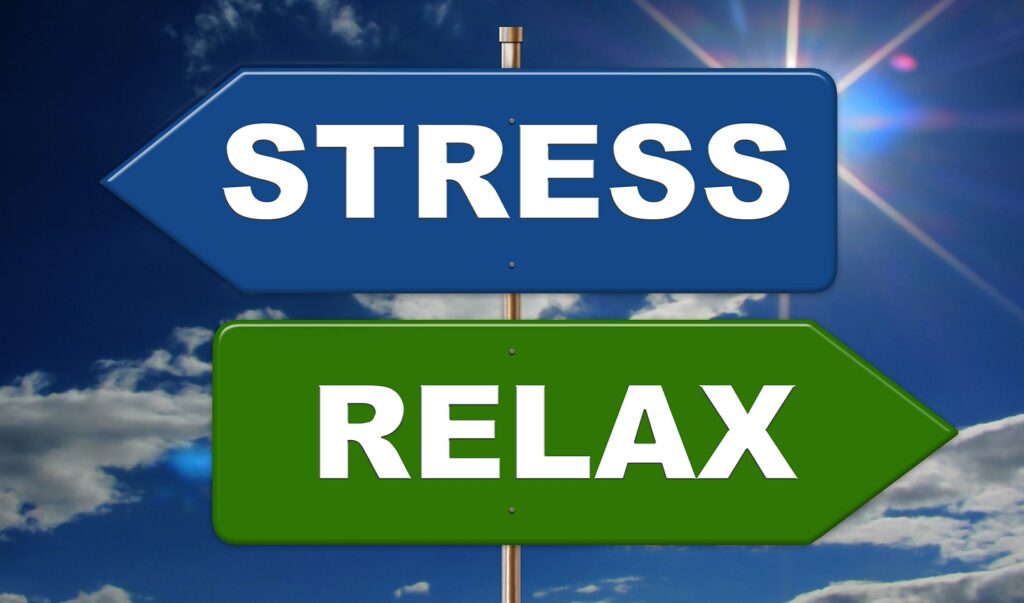Dealing with stress has become a Universal concern for people of all ages. It is for that reason I have decided to dedicate this and the upcoming blog posts to the topic, as well as my YouTube videos for January and February. Scientific studies, medical reports, and overall, our own personal experience clearly reveals the detrimental effects stress has on us personally, professionally, and in our relationships. The good news is, there are many effective ways to relieve and manage stress in a healthy way.
“About 33 percent of people report feeling extreme stress. 77 percent of people experience stress that affects their physical health. 73 percent of people have stress that impacts their mental health.” Sep 5, 2022
TheRecoveryVillage.com
In small doses, stress is fine, even stimulating. The problems arise when it is constant, intense and we don’t have the tools to manage it, as is the case for many people. Modern life for most is stressful from the time we wake up in the morning until we go to bed at night. Many do not sleep well because of the stress, which affords them even less capacity to manage it effectively. It is a vicious cycle.
When stress continues this way, it can truly wreak havoc in our lives.
Here are some alarming statistics:
- Forty-three percent of all adults suffer adverse health effects from stress.
- Seventy-five percent to 90% of all doctor’s office visits are for stress-related ailments and complaints.
WebMd.com
- Stress can play a part in problems such as headaches, high blood pressure, heart problems, diabetes, skin conditions, asthma, arthritis, depression, and anxiety.
In 2023, one of my goals is to help my clients become pro-active and therefore have less stress in their lives.
It is much easier to prevent the negative consequences of stress than to deal with the crises that come when it has surpassed our limits.
“Approximately 284 million people worldwide have an anxiety disorder” (Our World in Data, 2017)
Singlecare.com
“The lifetime prevalence of an emotional disorder is more than 50%, often due to chronic, untreated stress reactions.”
WebMd.com
I know from my own personal and professional experience just what stress can do and how easily it can sneak up on you. In 2014, I was diagnosed with Complex Post Traumatic Stress Disorder which was a result of childhood trauma mixed with ongoing chronic stress. Since then I have been studying, training, and finding my way along the road to recovery. In 2021, I wrote a book “Lessons from the Storm, 7 Steps to Turn Breakdowns into Breakthroughs” and developed an intensive program to help my clients do the same.
What are the ways that you have found for dealing with the inevitable stress of modern living? What are the practices and techniques that help combat the daily pressure? Many of us rely a bit too much on those more questionable coping mechanisms, especially during the holidays. Do you find yourself having that extra glass of wine a bit too often or binging on junk food and Netflix to cope.
“Stress is a key risk factor in addiction initiation, maintenance, relapse, and thus treatment failure “ (Sinha & Jastreboff, 2013
PsychologyToday.com
I used to think that stress was caused mainly by external factors… pressures at work, problems in relationships, financial challenges, etc. While what happens around or to us certainly affects us… the most important factor is what we do with that. Overall, what makes the biggest difference is how we deal with it internally.

Here are some practical tips to help you experience less stress in 2023.
1. Learn to resource and regulate your nervous system
Our reactions to stress typically trigger the flight or flight reaction in our nervous system. The original purpose of this mechanism is to keep us safe and alive, to help us survive. However, our amygdala (the brain center that starts the process) experiences actual life-threatening situations almost equally as it does everyday situations that we perceive as menacing, such as deadlines, traffic jams, endless to-do lists, changes, etc. In modern-day culture, juggling work, family, social life/media, technology, etc… many of us are in a perpetual switched-on or revved-up kind of state. Our sympathetic nervous system is continually activated and the stress hormones like adrenaline and cortisol are being pumped out incessantly, instead of just in some urgent moment.
For a more detailed explanation of how this works and affects you, see the following article:
https://www.health.harvard.edu/staying-healthy/understanding-the-stress-response

The way to counteract this is by activating the parasympathetic nervous system, the “rest and digest” response. How can we initiate the relaxation response? Here are a couple of my favorite ways:
Somatic Practices (Yoga, Dance, Moving, Jumping, Shaking…)
“Stress generally refers to two things: the psychological perception of pressure, on the one hand, and the body’s response to it, on the other, which involves multiple systems, from metabolism to muscles to memory.”
PsychologyToday.com
Stress lives in our bodies. Anyone who experiences stress on a regular basis knows perfectly well the tension, aches and pains that show up in the body as a result. Mine is usually in my shoulders. Many feel it in their lower back or experience headaches.

If we want to liberate stress from our lives, we need to start with the body. We need to move, literally jumping and shaking are excellent ways to shake off stress. Dance, yoga, and sports of all kinds are great stress busters.
Consciously inhabiting, honoring, and moving our bodies greatly reduces stress. It allows us to reclaim a sense of sovereignty, safety, and confidence.
Somatic practices are crucial and tremendously effective for both preventing and releasing accumulated stress and tension in the body and the mind.
Pranayama
Learning how to use the breath consciously is another underestimated yet potent tool for transforming stress. I learned this myself first-hand when I was doing my Yoga Teacher Training while working long hours as an event coordinator (a highly stressful job). I remember the awe I felt those first times I applied the pranayama techniques I was learning to those moments of high stress on the job. The change I experienced each time I used one of the techniques, seemed almost miraculous,.
Most of us have heard about counting to 10 when we’re upset or taking deep breaths. But perhaps it seems too simple for it to truly be useful. I assure you; it does work. But, like anything else, it only works if you do it.
There is a plethora of techniques to choose from such as square breath, Ujayi, alternate nostril or simply slowing, deepening, and counting the exhale. Find a couple that you like and use them regularly. Try it throughout the day, whenever you feel a bit tense, under pressure, rushing, or facing a challenge. Pay attention to how you feel before and after. I guarantee you will notice a difference.
2. Monitor Your Internal Dialogue
This is a big one that is often downplayed but can make or break our capacity to tolerate and even transform stress rather than being consumed by it.
One of the great lessons I learned through Mindfulness training is that we don’t have to believe our thoughts.
Just because you have thoughts of what could go wrong and the worst possible outcome, doesn’t mean it will happen. Author Mark Twain said, “Some of the worst things in my life never actually happened.”
Train your inner voice to speak to you with kindness and encouragement instead of criticism and worry. Such a simple phrase to suggest and yet for many of us, this takes deep internal work to transform. Many people have a loud, mean Inner Critic that runs (and ruins) our lives. I certainly did. If that is the case for you, please know that you can train, heal and re-program this wounded part of you.

Don’t argue with it, that is just a waste of energy. Instead, try saying, out loud, if possible, if not, then internally, “STOP!”. Catch yourself in the act and choose to change the inner dialogue. Ask it what it’s trying to protect you from and see if you can find a new, kinder way to provide that for yourself.
Try using mantras and affirmations. Hang them around your house and office so you see and remember them. Say and sing them to yourself throughout the day.
One of my favorite mantras is, “I can, and I am”.
We generate so much stress by telling ourselves that we aren’t enough, can’t do it, don’t have enough time, or should be better, more, different than we are. The most successful people aren’t necessarily the most perfect humans on the planet. They are likely the ones that believe in themselves the most and speak to themselves in an empowered way.
3. Re-Parent Your Inner Child
Last, but certainly not least, (for this blog post) has to do with learning to re-parent the Inner Child and therefore embodying emotional maturity/intelligence.
Stress is a dimension of fear. Excess fear is usually a product of a wounded inner child. A wounded inner child needs help to assimilate old, trapped experiences and emotions, often trauma. One way we do that is by re-parenting the inner child. Give them the support, resources, and tools that they habitually did not receive in childhood. Allow them space to express and feel their feelings. Teach them healthy ways to manage their feelings, fears, and stress.

Many people vacillate between extremes with their emotions. They either habitually repress, ignore, and avoid them OR they become trapped, overwhelmed, and imprisoned by them. People are usually either disconnected from their emotions, a victim of them, or both.
I developed an antidote to this which I use for myself daily and incorporate into all the work I do with clients. I call it, “Feel it, Don’t Feed it”. It means to open to the direct experience of what is coming up without feeding the mental story about how we are a victim or how there is something wrong with us, (or whatever other narrative churns through the frantic mind at that moment).
For most of my life, I struggled with all the varying emotional problems one can imagine from deep fears, phobias, and anxiety to rage, jealousy, guilt, and shame. You name it, I’ve “battled” it. Through my extensive battles, I learned that fighting will never work. They say, “what you resist, persists” and I have found it to be so true.
Use Mindfulness
We can learn to open a kind, supportive, loving, unconditionally present space for whatever comes up within. I often use and teach the Mindfulness technique, R.A.I.N. for this. I highly recommend it, as it is a powerful healing tool for working with emotions. When we allow what we feel without pushing it away, there is deep healing for the Inner Child who was so often abandoned when they needed support and guidance. When we stop abandoning ourselves, we grow, we gain emotional intelligence and there is deep inner relaxation. We feel safer and when we feel safe, we de-activate the stress response.
These are a few of the best ways I have found to generate and suffer less stress in our lives. I hope they serve you well. If you’ve found this helpful, please keep an eye out for Part 2 as well as check out my YouTube channel for short videos along these lines. You can also download my eBook for a more in-depth exploration of these tips. If you are struggling with stress or stress-related issues such as anxiety, depression, phobias, loss, change, etc, and would like further support, please feel free to contact me.
Happy New Year.
May you experience less stress and more joy in 2023!


Great article Melissa, very useful and proactive steps to help fight strees, thankyou!!!
Melissa, thank you for sharing your experience and knowledge. Please keep the blogs flowing!
Thank you Jennifer! I really appreciate your kind words and encouragement:)
Thank you Adam! I’m so glad you found it helpful!
Soooo true, all of it!!!!! These are the teachings for the times of this moment. For my own long journey of healing the missing component has been working more consistently with the body and physical realm. Thank you Melissa for doing the work and showing up and being a teacher, guide and light for yourself and others.